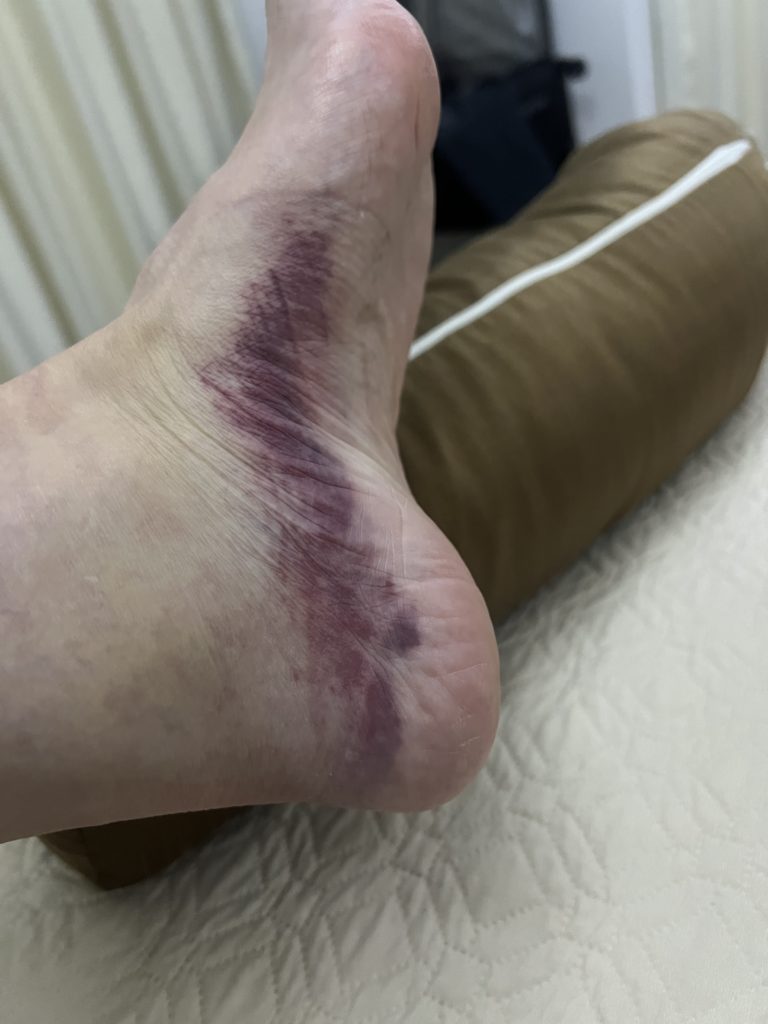“You have to put up with some bother in order to reap the benefits,” my therapist cautioned me just prior to our two-week excursion in Ecuador.
What he meant was that everything involves some “bother” – annoyances you simply can’t avoid. The key is to put the bothers in perspective, so you don’t lose sight of the big picture – in this case, the fun we were planning to have on the vacation.
Bothers while traveling abound.
Standing in lines at the airport is no one’s idea of a good time.
Tight seats that don’t recline with no leg room are a pain. But you have to go through it in order to get to your destination.
Your hotel room might be facing a bright streetlight. Should it ruin your enjoyment of all the daytime activities you’ve got lined up?
You went to a fancy restaurant, but you didn’t love what you ordered. Frustrating, yes, but it’s not the end of the world.
Bothers have a psychological term: reactants – “an unpleasant motivational arousal to the loss of freedom.”
“I’m sorry, your carry-on can’t go there.”
“It’s not time for your group to board yet.”
Even “Please buckle your seatbelt” can be a reactant.
This mantra became incredibly helpful during our time in South America.
When the passport control line wriggled and wound its way in crazy-eights for more than an hour, my wife, Jody, and I simply repeated the “bother to benefit” message and, before you knew it, we were in Quito.
But what happens when the bother is bigger than a long line or a mediocre meal?
A few days after we arrived in Quito, Jody noticed something odd going on with my left foot: It had turned black and blue and swollen to twice its normal size.
Not just the foot – my whole leg was retaining fluid. And it hurt like crazy to walk. I could barely pull on my hiking boots – not the best situation when you’re about to start a holiday that is primarily about trekking.
I’ve never been someone who slows down. My fear-of-missing-out on seeing a penguin or giant tortoise is too pronounced to skip a day of snorkeling or climbing to the top of that volcano.
But I was concerned. We were about to fly to the Galapagos. I needed to be sure this unexpected edema was not a thrombosis. If a blood clot traveled from the leg to the heart or lungs and I was on a flight over an ocean, that could be bad.
I called a doctor.
Within an hour, an emergency medicine physician and nurse arrived at my hotel room where they did a full assessment. They took blood and brought in a portable ultrasound unit to image my leg.
Everything came out negative: I was clear to fly. The doctor prescribed some painkillers, compression socks for the flight, and blood thinners to take prior to boarding.
“Did you really need to see a doctor in Ecuador?” my therapist asked upon my return. “Maybe it wasn’t necessary?”
“I could have died if I didn’t get this diagnosed correctly,” I exclaimed.
Still, I understood his point, even as it frustrated me.
I do tend to run to doctors more than the average person. I have been zealously monitoring my body – my therapist would say “over monitoring – since I was a teenager with Crohn’s disease and needed to report to my gastroenterologist all the bloody details.
Since then, my monitoring has bordered on obsessive.
Is that dry cough turning wet? Is another round of pneumonia coming on?
Am I feverish? I just took my temperature 20 minutes ago. Should I do it again?
Is that sudden flurry of floaters a sign of retinal detachment? My ophthalmologist sent me to the ER, and I dutifully complied.
My eyes were fine.
“Do you feel that all your monitoring might be getting in the way of you focusing on what’s important?” my therapist asked.
“Sometimes yes,” I said ruefully, not wanting to admit that a change in behavior might increase my overall engagement with life.
Don’t get me wrong: The trip was wonderful despite the physical challenges. But upon our return, I was so unable to walk that I stayed in bed for 36 hours with my leg elevated.
The edema miraculously resolved nearly entirely.
Meanwhile, Jody and I began to explore some tough questions.
Were we getting too old for this kind of adventurous travel? I’ve tried to ignore the role my cancer might be playing in all this, but maybe that’s no longer prudent.
Should I just accept that, after these kinds of trips, I’ll be laid up for a few days – or longer – and that’s the price of seeing the world for someone like me?
Going forward, should we eschew the challenging treks in favor of more relaxing beach holidays?
Meanwhile, my therapist had started to come around.
“There’s a difference between a ‘bother’ like getting stuck in traffic and a potentially life-threatening condition. You were right to call the doctor in Quito.”
Now back in Israel, I still need to figure out what caused my foot to swell so much that it looked more like a tree trunk or an animated golf putter than an actual human appendage.
Was it the high altitude? (Quito’s elevation is 3,000 meters.)
The 25,000 steps a day we were logging?
The plane ride itself?
My doctor scheduled more tests.
Until then, I’m finding myself monitoring my foot from time to time, an over precaution to be sure, but changing old habits is hard.
It’s a fine line. The goal now is to learn how to thread it.
I first wrote about bothers and benefits in The Jerusalem Post.



